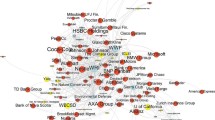Abstract
Smoking bans are gaining widespread support in the United States and other countries. While supporters argue that bans are necessary to resolve market failures associated with negative externalities, the Coase Theorem predicts that, under various conditions, private markets internalize negative externalities. We examine the smoking issue within the framework of the Coase Theorem and hypothesize that smoking bans misallocate air space resources shared by smokers and nonsmokers. Because smoking bans shift ownership of scarce resources, they are also hypothesized to transfer income from one party (smokers) to another party (nonsmokers). Supporting evidence for these hypotheses is provided by an examination of a comprehensive smoking ban imposed in San Luis Obispo, CA.
Similar content being viewed by others
References
Coase, R.A. (1960). The problem of social cost.Journal of Law and Economics 3(October): 1–44.
Dusenbury, L., Kerner, J.F., Baker, E., Botvin, G., James-Ortiz, S. and Zauber, A. (1992). Predictors of smoking prevalence among New York latino youth.American Journal of Public Health 82(January): 55–84.
Johnson, J. and Whitaker, A.H. (1992). Adolescent smoking, weight changes, and binge-purge behavior: Associations with secondary amenorrhea.American Journal of Public Health 82(January): 47–54.
Kaldor, N. (1939). Welfare propositions of economics and interpersonal comparisons of utility.Economic Journal 49(September): 549–552.
Lee, D.R. (1991a). Government v. Coase: The case of smoking.The Cato Journal 11(Summer): 151–165.
Lee, D.R. (1991b). Environmental economics and the social cost of smoking.Contemporary Policy Issues 9(January): 83–91.
Lewit, E.M., Coate, D. and Grossman, M. (1981). The effects of government regulation on teenage smoking.Journal of Law and Economics 24(December): 545–569.
Phelps, C.E. (1992).Health economics. New York: HarperCollins.
Ryan, J., Zwerling, C. and Orav, E.J. (1992). Occupational risks associated with cigarette smoking: A prospective study.American Journal of Public Health 82(January): 29–32.
Tollison, R.D. and Wagner, R.E. (1992).The economics of smoking. Norwell, MA: Kluwer Academic Publishers Group.
Wake, R., McAlister, A. and Nostbakken, D. (Eds) (1982).A manual on smoking and children, Vol. 73. Geneva: UICC Technical Report Series.
Wasserman, J., Manning, W.G., Newhouse, J.P. and Winkler, J.D. (1991). The effects of excise taxes and regulations on cigarette smoking.Journal of Health Economics 10: 43–64.
Author information
Authors and Affiliations
Additional information
We gratefully acknowledge the helpful comments of an anonymous referee.
Rights and permissions
About this article
Cite this article
Boyes, W.J., Marlow, M.L. The public demand for smoking bans. Public Choice 88, 57–67 (1996). https://doi.org/10.1007/BF00130409
Accepted:
Issue Date:
DOI: https://doi.org/10.1007/BF00130409




